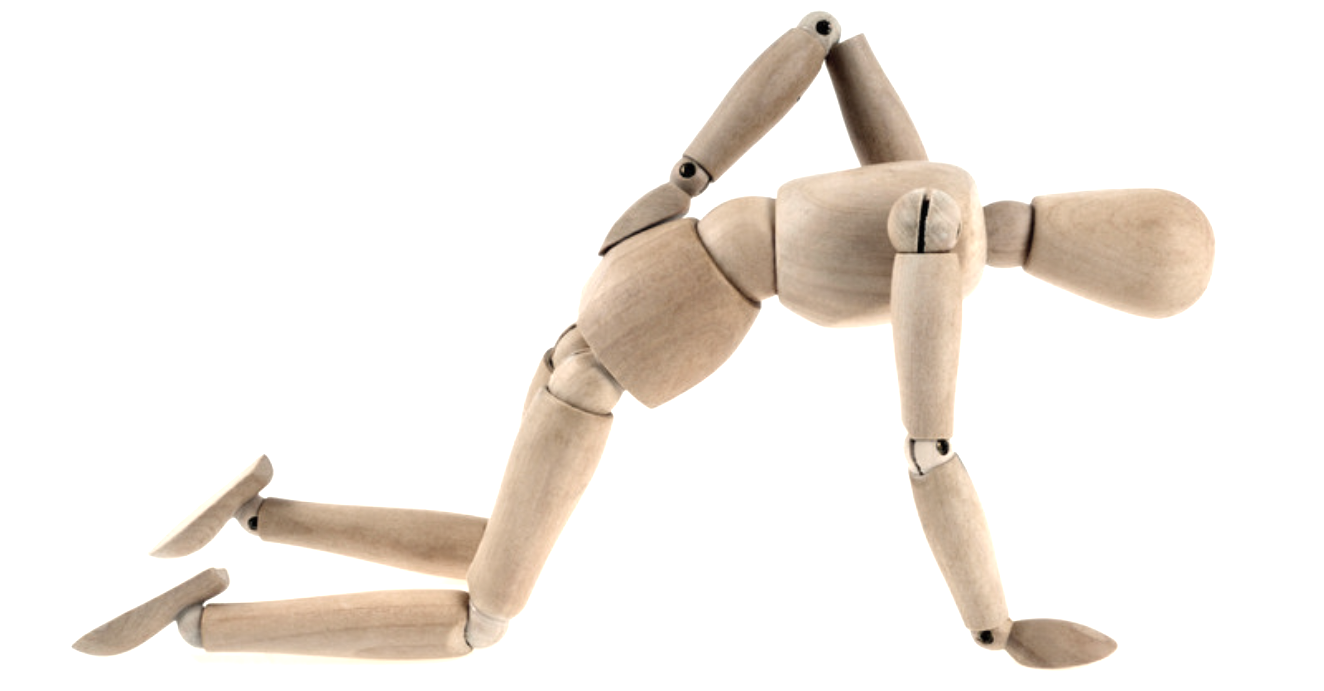Home Remedy for Sciatica Pain To Help Ease Discomfort
Discover effective home remedies for sciatica pain relief. Learning simple techniques and natural treatments help ease discomfort & improve mobility at home.

Sciatica pain can be a debilitating condition, affecting your ability to perform daily activities and enjoy life. Fortunately, there are home remedies that can help alleviate this discomfort. This article will explore various strategies to manage sciatica pain from the comfort of your home.
Home treatment might be required to treat it, especially if you know that your sciatica is caused by an injury or pregnancy.
Even if you are unaware of the root cause, you can take steps to relieve your pain at home. Call your doctor if the pain isn't manageable or under certain other circumstances.
In this article, we'll look at the following:
- Learn about effective home remedies for sciatica pain relief.
- Understand how lifestyle changes can contribute to managing sciatica symptoms.
- Discover practical exercises and stretches that can help ease sciatic nerve pain.
Sciatica Pain
It's a symptom of an underlying condition that involves the sciatic nerve, it runs from the lower back down to the legs, and when it's irritated or compressed, it can cause pain, numbness, or tingling in the affected areas.
Understanding the nature of sciatica is crucial in finding the right home remedy to alleviate the pain.
Home Remedies for Sciatica Pain
Regardless of the cause, 90% or more people with sciatica will get better without surgery—most of them in just a few weeks. You can start treating your sciatica at home.
Heat & Cold Therapy
Heat and cold therapy serve as effective and accessible home remedies for managing sciatica pain. Applying heat, such as with a hot compress or warm bath, can help relax muscles, alleviate stiffness, and promote blood flow to the affected area.
Cold Therapy
For the first 7 days use ice: Place ice packs on your lower back to reduce inflammation of the sciatic nerve. Be careful not to give yourself frostbite. Icepacks shouldn't directly touch the skin; wrap them in a cloth or towel.
Try a cycle of on-off-on-off-on (this will take between 75 and 100 minutes). Then take a break to see how you feel.
Hot Therapy
Use - a hot water bottle or heating pad wrapped in a towel - apply it to your lower back. Improperly applied heat treatment can cause burns, so follow a few rules:
- Check the temperature of the pad, and place a cloth barrier if required. Ensure that the treatment provides enough warmth but not uncomfortably warm.
- Apply heat between 15 minutes to two hours, depending on your pain level. Please ensure not fall asleep while applying it.
The warmth penetrates deep into the tissues, providing a soothing sensation that can ease tension along the sciatic nerve. On the other hand, cold therapy, often applied through ice packs or cold compresses, is valuable for its anti-inflammatory properties.

Cold helps to constrict blood vessels, reducing swelling and numbing the area, offering temporary relief from the pain associated with sciatica.
For individuals with sciatica, experimenting with both heat and cold applications can help determine which therapy is more effective in providing comfort and aiding in the overall management of sciatic nerve pain from the comfort of home.
Stretching
Harnessing the power of stretching can be a potent home remedy for managing sciatica pain. Specific stretches target the muscles surrounding the sciatic nerve, helping to alleviate tension, improve flexibility, and reduce compression on the nerve itself.
Gentle exercises, such as the knee-to-chest stretch or the cat-cow stretch from yoga, can elongate the spine and release pressure on the sciatic nerve. Incorporating these stretches into a daily routine promotes increased blood flow to the affected area, assisting in the healing process.

Stretching also plays a crucial role in preventing muscle imbalances and maintaining optimal posture, reducing the likelihood of sciatic nerve irritation.
As a versatile and accessible remedy, regular stretching empowers individuals to take an active role in managing sciatica pain from the comfort of their homes, fostering both relief and long-term resilience against future discomfort.
Exercise
Incorporating gentle exercise emerges as a highly effective home remedy for alleviating sciatica pain. Engaging in activities such as walking, swimming, or low-impact exercises can improve flexibility, strengthen muscles, and enhance overall mobility, all of which contribute to reducing the symptoms of sciatica.
Specific exercises, like pelvic tilts or nerve gliding movements, target the sciatic nerve's pathway, promoting its mobility and reducing compression. Regular physical activity also stimulates the release of endorphins, the body's natural pain relievers, fostering an improved mood and overall well-being.
As a home remedy, gentle exercise not only helps in managing existing sciatica pain but also plays a crucial role in preventing future episodes, making it a proactive and empowering approach for individuals seeking relief within the comfort of their homes.
Massage
Massage stands out as a therapeutic and accessible home remedy for alleviating sciatica pain. Skilled massage techniques target the muscles surrounding the sciatic nerve, aiming to release tension, improve blood circulation, and reduce inflammation.
The hands-on approach of a massage therapist can provide relief by promoting relaxation and easing the pressure on the sciatic nerve.
Additionally, massage helps stimulate the release of endorphins, the body's natural painkillers, contributing to an overall sense of well-being.

Whether through professional massage sessions or self-massage techniques at home, this remedy offers a holistic approach to managing sciatica pain, addressing both the physical discomfort and the potential psychological stress associated with this condition.
Regular massage, either as part of a professional treatment plan or through self-care practices, can be a valuable component in the journey toward finding relief from sciatic nerve pain within the comfort of one's home.
Herbal Remedies & Supplements
Herbal remedies and supplements present a natural and alternative avenue for managing sciatica pain from the comfort of home. Following herbs, such as turmeric and ginger, known for their anti-inflammatory properties, can be incorporated into one's diet or taken as supplements to help reduce inflammation along the sciatic nerve.
Additionally, supplements like fish oil, which contains omega-3 fatty acids, may have anti-inflammatory effects, potentially contributing to pain relief. Devil's claw and white willow bark are herbal options that have been traditionally used for their analgesic properties.
However, it's essential to consult with a healthcare professional before incorporating herbal remedies or supplements, as they may interact with medications or have contraindications.
This holistic approach addresses sciatica pain by tapping into the therapeutic potential of nature, emphasizing the importance of informed and personalized choices in home-based sciatica management.
Hydration
Hydration emerges as a simple yet crucial home remedy for managing sciatica pain. Staying well-hydrated is essential for maintaining the health of spinal discs, as dehydration can lead to reduced disc height and increased pressure on the sciatic nerve.
Water plays a vital role in facilitating nutrient transport, supporting the healing process, and ensuring the optimal function of muscles and nerves. Proper hydration also helps in maintaining the elasticity of soft tissues, potentially reducing stiffness and enhancing overall flexibility.
While it may seem straightforward, the impact of adequate hydration on the body's internal functions, including those related to sciatica, underscores the significance of this home remedy.
Ensuring a consistent intake of water is a proactive and easily implementable strategy for individuals seeking holistic ways to manage and prevent sciatica pain within the comfort of their homes.
Mind-Body Techniques
Mind-body techniques represent a holistic and powerful home remedy for managing sciatica pain by addressing the interconnectedness of physical discomfort and mental well-being.
Practices such as meditation, mindfulness, and deep breathing can help individuals cultivate a heightened awareness of their bodies, promoting relaxation and stress reduction. By focusing on the mind's influence on pain perception, these techniques empower individuals to better cope with sciatica-related discomfort.

Yoga, specifically tailored to accommodate sciatica, combines physical postures with breath control and meditation, fostering flexibility, strength, and a sense of calm.
Engaging in mind-body practices not only aids in pain relief but also contributes to a positive mindset, creating a harmonious balance between mental and physical health.
As a home remedy, these techniques offer a versatile and accessible approach, encouraging individuals to tap into their innate ability to influence and alleviate sciatica pain through the interconnected dynamics of the mind and body.
Keep Moving: A Key Remedy for Sciatica Pain
For those dealing with sciatica, movement is your ally in finding relief. While it might be tempting to stay in bed or rest in a comfy chair when pain strikes, that's not the solution!
In the initial days of sciatica discomfort, some rest is okay. However, prolonged bed rest often worsens things instead of making them better. Movement is beneficial for several reasons:
- Strengthens Muscles: Building muscle strength provides crucial support to your spine.
- Improves Flexibility: Regular movement enhances flexibility and range of motion.
- Boosts Blood Flow: Increased blood circulation aids healing in injured areas.
- Reduces Pain Perception: Moving around can lessen the feeling of pain.
If you're experiencing sciatica, start moving as soon as you can. If movement seems to make the pain worse, consulting a doctor is a wise step. Once you have your sciatica under control, keep moving to reduce the chances of it returning. Avoid prolonged sitting, as it not only increases the risk of sciatica but can also worsen the condition if you already have it.
Summary
Sciatica pain can be a challenging condition to live with, but numerous home remedies can provide relief. From improving posture and ergonomics to engaging in gentle exercise and stretching, these strategies can help manage your symptoms. Remember to listen to your body and consult a healthcare professional if your pain is severe or persistent.
FAQ Section
Q: What home remedies can help alleviate sciatica pain?
Answer: Sciatica pain can be tough, but some simple home remedies might offer relief:
- Hot or Cold Packs: Applying a hot or cold pack to the affected area can help reduce inflammation and ease discomfort. Experiment with both to see which works best for you.
- Gentle Stretching: Try easy stretches like the cat-cow stretch or knee-to-chest stretch. These can relieve pressure on the sciatic nerve.
- Good Posture: Maintain a proper sitting and standing posture. Avoid slouching to reduce pressure on your lower back.
- Pillow Support: Use a pillow between your knees when sleeping on your side. This helps align your spine and may ease sciatica pain.
- Over-the-Counter Pain Relievers: Non-prescription pain relievers like ibuprofen or acetaminophen may provide temporary relief. Remember to follow the recommended dosage.
- Walking and Exercise: Low-impact activities like walking or swimming can strengthen your back and reduce sciatica pain over time.
- Stay Active: Don't stay in one position for too long. Take breaks, move around, and avoid sitting or standing for extended periods.
Keep in mind that it might work differently from person to person, so it's good to consult with a healthcare professional for personalized advice. If pain persists or worsens, seek medical attention.
Q: Is rest an effective home remedy for sciatica pain?
Answer: While rest is essential during acute episodes of sciatica, prolonged bed rest is generally not recommended. Gentle movement, such as short walks or specific sciatica exercises, is often more beneficial in preventing stiffness and promoting healing.
Balancing rest with targeted activities that don't exacerbate pain can contribute to a more effective and holistic approach to managing sciatica pain at home.
Q: How can heat or cold therapy be used as a home remedy for sciatica pain?
Answer: Heat and cold therapy are valuable home remedies for sciatica pain. Applying a hot compress or warm bath helps relax tense muscles, promoting blood flow to the affected area.
Conversely, cold packs can help reduce inflammation and numb the area, providing temporary relief. It's advisable to experiment with both heat and cold to determine which therapy works best for individual comfort and pain management needs.
